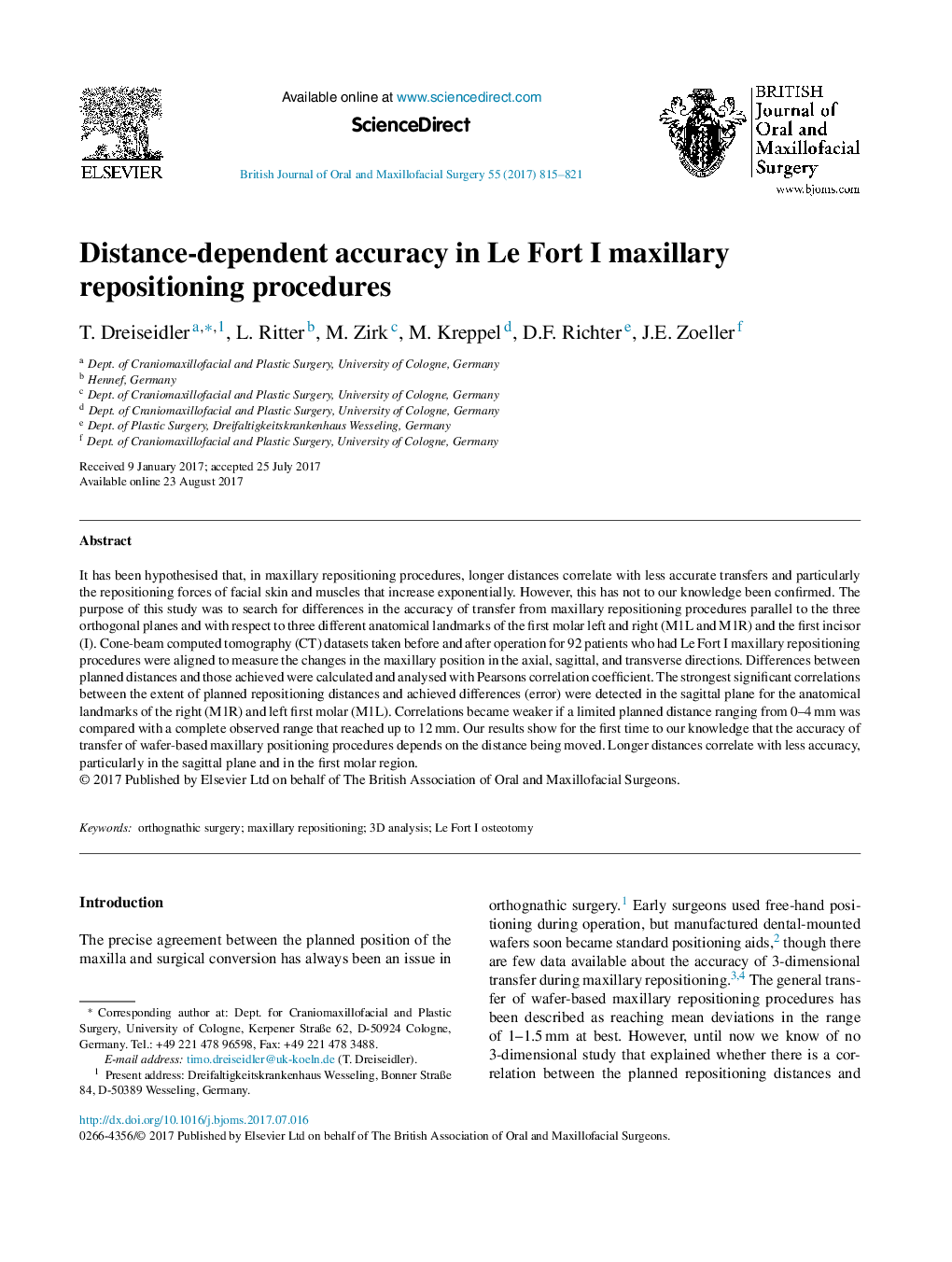| Article ID | Journal | Published Year | Pages | File Type |
|---|---|---|---|---|
| 5638195 | British Journal of Oral and Maxillofacial Surgery | 2017 | 7 Pages |
Abstract
It has been hypothesised that, in maxillary repositioning procedures, longer distances correlate with less accurate transfers and particularly the repositioning forces of facial skin and muscles that increase exponentially. However, this has not to our knowledge been confirmed. The purpose of this study was to search for differences in the accuracy of transfer from maxillary repositioning procedures parallel to the three orthogonal planes and with respect to three different anatomical landmarks of the first molar left and right (M1L and M1R) and the first incisor (I). Cone-beam computed tomography (CT) datasets taken before and after operation for 92 patients who had Le Fort I maxillary repositioning procedures were aligned to measure the changes in the maxillary position in the axial, sagittal, and transverse directions. Differences between planned distances and those achieved were calculated and analysed with Pearsons correlation coefficient. The strongest significant correlations between the extent of planned repositioning distances and achieved differences (error) were detected in the sagittal plane for the anatomical landmarks of the right (M1R) and left first molar (M1L). Correlations became weaker if a limited planned distance ranging from 0-4Â mm was compared with a complete observed range that reached up to 12Â mm. Our results show for the first time to our knowledge that the accuracy of transfer of wafer-based maxillary positioning procedures depends on the distance being moved. Longer distances correlate with less accuracy, particularly in the sagittal plane and in the first molar region.
Related Topics
Health Sciences
Medicine and Dentistry
Dentistry, Oral Surgery and Medicine
Authors
T. Dreiseidler, L. Ritter, M. Zirk, M. Kreppel, D.F. Richter, J.E. Zoeller,
